Natural fats have been gradually coming back after a decades-long fear campaign.
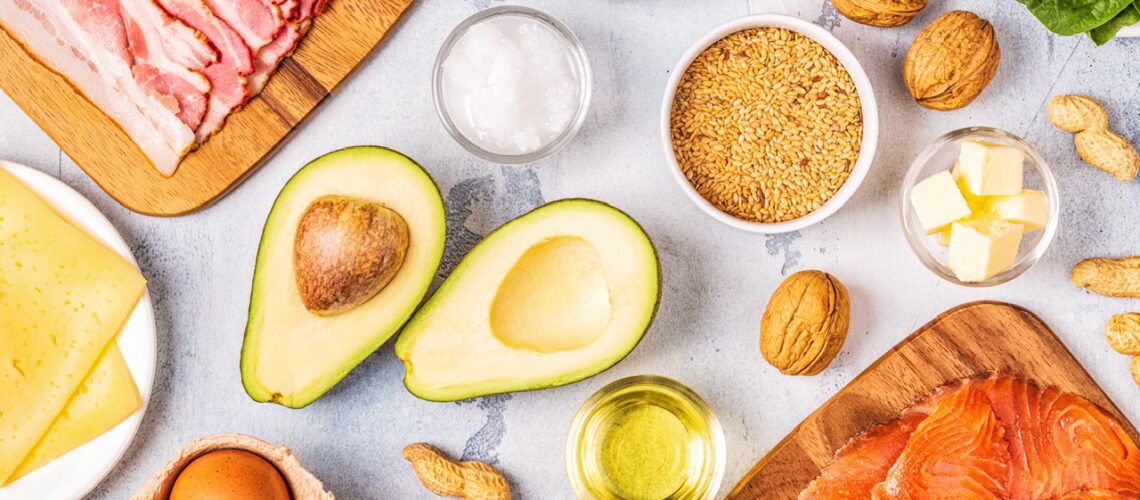
When I was growing up, society was told that fat was bad for our health because it led to cardiovascular disease and obesity. In my late teens and early 20s, I tried hard to cut fat wherever I could. There were people who didn’t like the low-fat movement because of its impact on taste, but anyone who was health-conscious looked for low-fat foods. Baking recipes sometimes reduced fat by adding applesauce. When fat had to be used in a recipe, many people chose liquid seed oils such as canola and safflower, viewing them as healthier alternatives to saturated fat. If a solid fat was required, a lot of people used margarine or Crisco instead of butter or lard believing that because they came from plants, they were healthier.
My thoughts about fat began to change in the mid 1990s when I tried to buy an ad in Alive magazine to share low-fat recipes. I chose Alive because I figured lots of health-conscious people read it. However, Alive didn’t want to give me ad space because they didn’t agree with a low-fat diet! The gentleman I spoke with talked about people developing health problems from not eating enough fat and suggested I read Fats that Heal, Fats that Kill by Udo Erasmus. I bought the book soon afterwards and learned that fat is good if it’s the right kind, and it can actually help prevent cardiovascular disease as well as arthritis, skin conditions and many other issues.
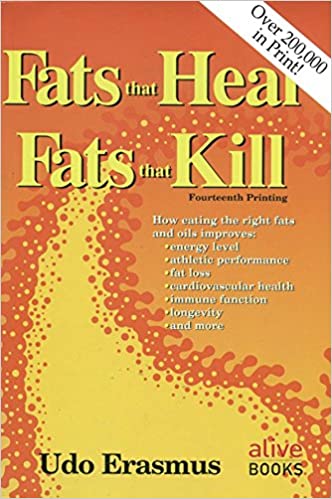
Erasmus explained that our modern diets have too much omega-6 fatty acids and not enough omega-3, so he recommended natural, polyunsaturated oils high in omega-3 such as flax oil. He also recommended oil blends with the optimal omega 3-6 ratio of 2:1. Erasmus cautioned us that polyunsaturated oils oxidize when exposed to air, light and heat and therefore they should never be used in cooking. He said to look for cold-pressed products in amber bottles stored in a refrigerator, and to avoid highly processed vegetable oils and hydrogenated / trans fats as these are very unhealthy. Eventually trans fats were banned in Canada and the USA. Both countries allowed a three-year phase out period. In the United States, the legislation took effect in 2015. Canada’s legislation was enacted more recently in 2018.
However, many restaurants did not switch from hydrogenated fats back to tallow (beef fat) in their deep fryers. Saturated fats were still considered unhealthy. And since highly processed vegetable oils were much cheaper anyway, restaurants continued to use them – just in their less stable liquid form so they could abide by the new trans fat ban. Was this the best solution in terms of health? Science researcher Nina Teicholz says “no” and that natural, heat-stable, saturated fats such as tallow and lard would be better alternatives. In fact, Teicholz believes those fats, along with butter and cheese, are part of a healthy diet. In the video below, she discusses the history of processed vegetable oils, how they came to replace natural fat in our food supply and why that was a mistake.
This video is from the 2017 Low-Carb Down Under conference in Australia. Nina Teicholz is the author of “The Big Fat Surprise”. You can find more of her lectures at this link.
In the video, Teicholz mentioned that because the polyunsaturated oils used in restaurant deep fryers are unstable, they turn into a kind of polymer that creates a stubborn residue that is very hard to clean. I searched for more information on this issue and discovered an article by Food & Business Europe. They were writing about the award-winning cleaner invented to deal with the unexpected problem of “polymerized soil” from restaurants using zero trans fat vegetable oils.
I do wish Teicholz had made a point to distinguish processed oils such as corn and soybean from unprocessed, cold-pressed oils such as flax and walnut. The latter are high in omega-3 fatty acids and as long as they are stored properly and not used in cooking, they are very healthy.
In recent years, promoters of the paleo and keto diets suggested that saturated fat was not unhealthy and should not be feared. The paleo diet is based on a philosophy that we should be eating closer to our ancient ancestors. Meat, vegetables, some fruit and natural saturated fats are recommended as well as monounsaturated oils. Grains, legumes and all processed foods are to be avoided. Generally, the paleo diet advises against using polyunsaturated oils, though these can be consumed in moderation in their whole-food form of nuts and seeds. The keto diet is focussed on substantially lowering carbs, increasing fat and entering a state of ketosis for optimal fat burning. These diets became very popular for weight loss, for stabilizing blood sugar and for reducing inflammation. There are anecdotal reports that some people experience improvement with certain mental illnesses when following these diets – especially the keto diet.
New ideas usually come with criticism and the idea that a low-carb / high-fat diet can be healthy is no exception (especially if it contains lots of saturated fat). Last year Nina Teicholz debated David L. Katz M.D. who advocates for a plant-based diet low in saturated fat. Unfortunately, the debate was set up more as a meat-eater vs vegan issue rather than an issue of saturated fat in and of itself. I also watched a video by chiropractor Dr. Sten Ekberg on this very issue. Although he argues for low-carb / high-fat diets, Ekberg says that neither a vegan diet nor a diet with meat is better than the other in terms of nutrition. It all depends on individual needs and the quality of the food choices within each diet. He also says that vegans can eat low-carb / high-fat as well as meat eaters, so the issue of fat and carbs should not be creating a division between these two groups.
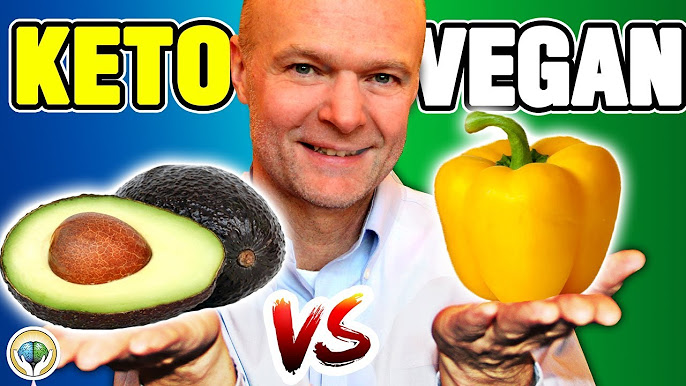
Dr. Ekberg has many informative videos about the issue of fat in the diet. One that I found particularly interesting was his evaluation of seeds. In that video he took the time to not only go over the omega fatty acids in various seeds, he also explained how the omegas function in the body and why too much omega-6 is harmful.
Ultimately though, Dr. Ekberg recommends lots of natural, saturated and monounsaturated fats such as grass-fed butter, grass-fed meat, coconut oil, avocados and extra virgin olive oil. He recommends some polyunsaturated fats from nuts and seeds as long as there aren’t too many omega-6 fatty acids in them. Click the photo below to see his YouTube video that explains why fat is good for us and what mechanisms occur in the body when we eat fat.
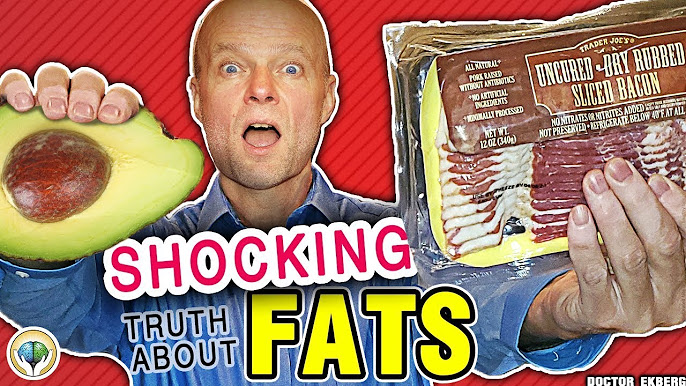
If you’re wondering about the issue of cholesterol in a high-fat diet, he also has a video explaining how cholesterol works in the body, what the benefits of it are, the specific issues that cause it to become a problem and why dietary cholesterol doesn’t need to be feared by most people.
As natural fat slowly becomes more acceptable, we are seeing more information about the dangers of sugar consumption – even natural sugars. A popular brand of snack bars called “Love Good Fats” uses the slogan: Fat is back. Sugar is out. It will be interesting to see how diet culture around fat continues to evolve. Is the high-fat and low-sugar trend just temporary or will it gain more momentum? How will changes in our perception of fat affect societal health in the long term?
Coming soon: information on the omega fatty acids, stability and smoke points of various fats and oils so you can choose the best options for your needs. 🥑 🍏
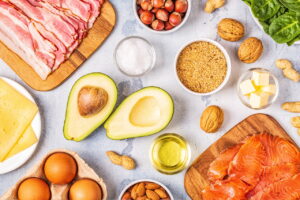
No Comments